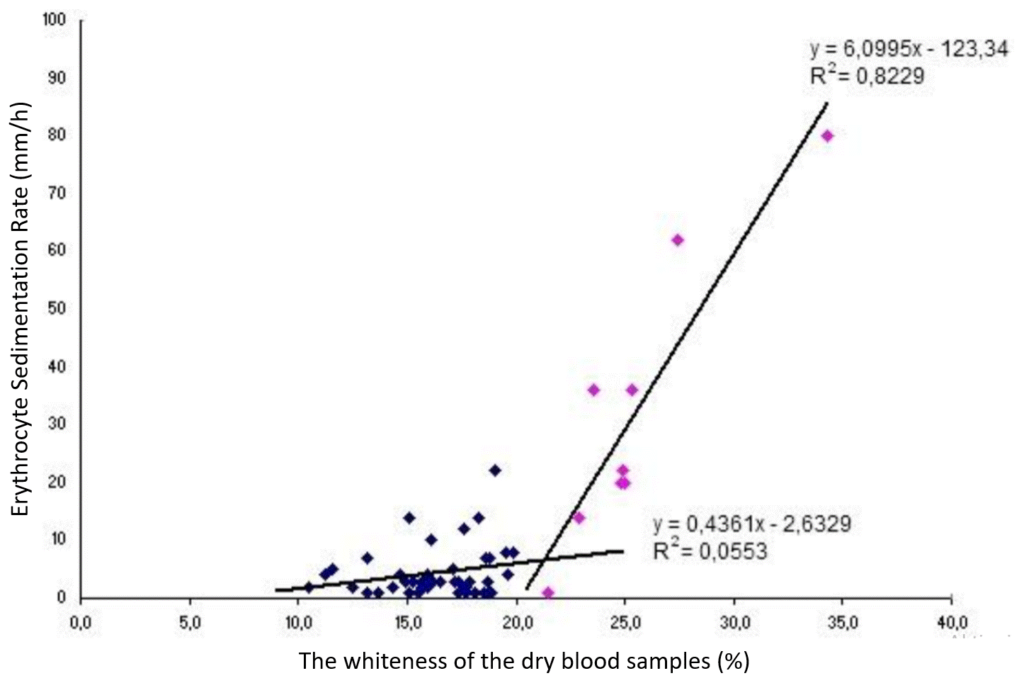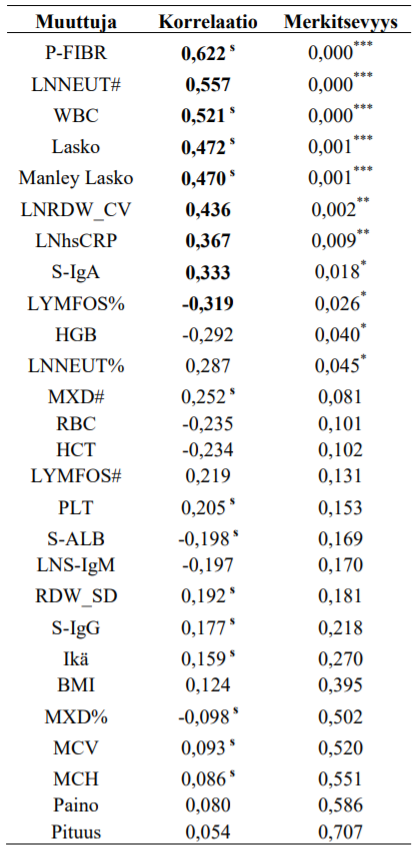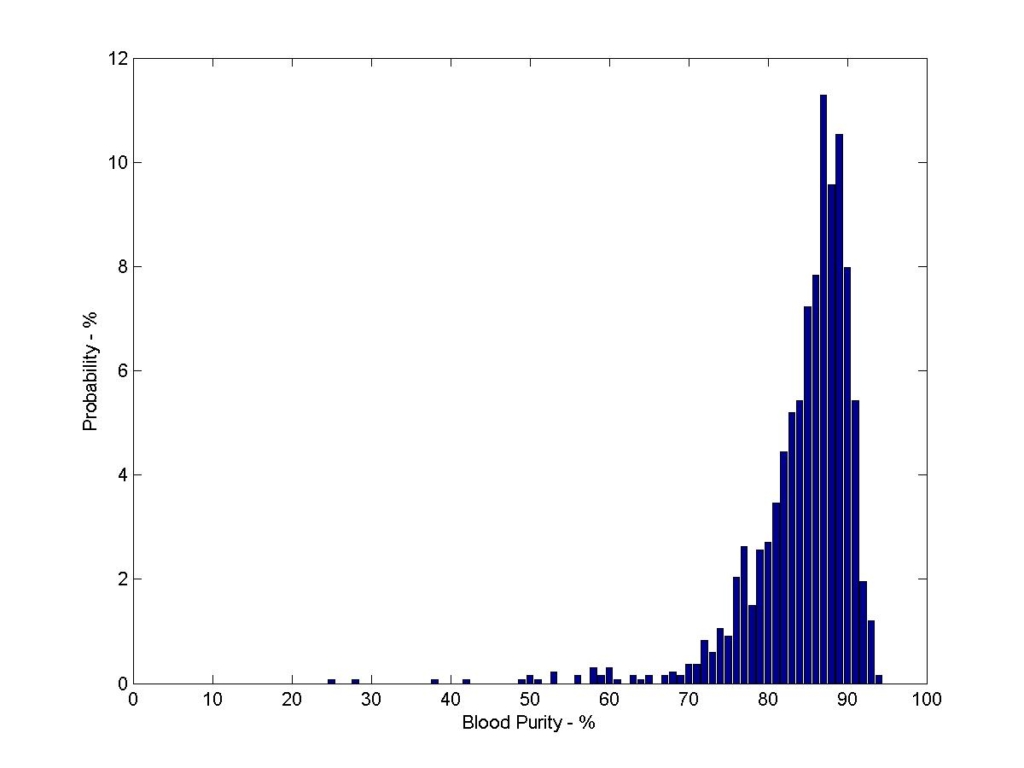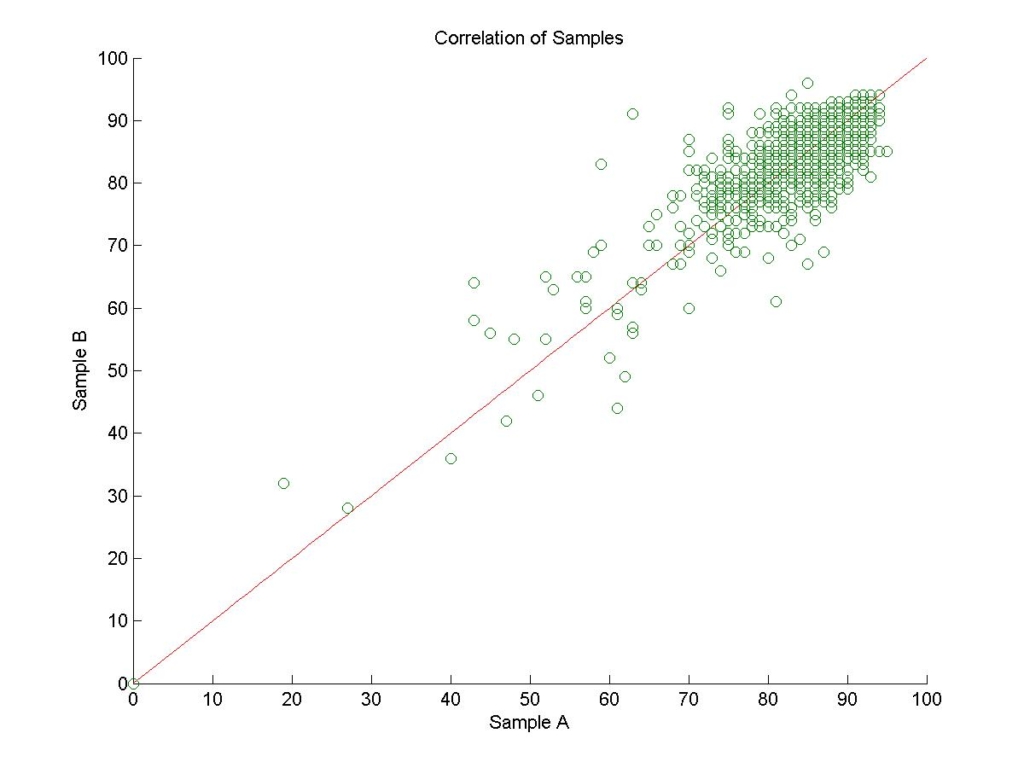Research
RESULTS
Visual Patterns of Dry Blood research report (Vapa & Vapa 2010) shows sample of 158 Finns and their dry blood profiles based on their diets and living habits. The main findings are that vegetarians and those meat eaters who drink purifying liquids (Alkalizers) have the most pure blood. In contrast those who stay up late, are obese (BMI≥30), drink alcohol, smoke or are stressed as well as those who have 4 or more diagnosed diseases (Sickness≥4) have the lowest quality of blood.
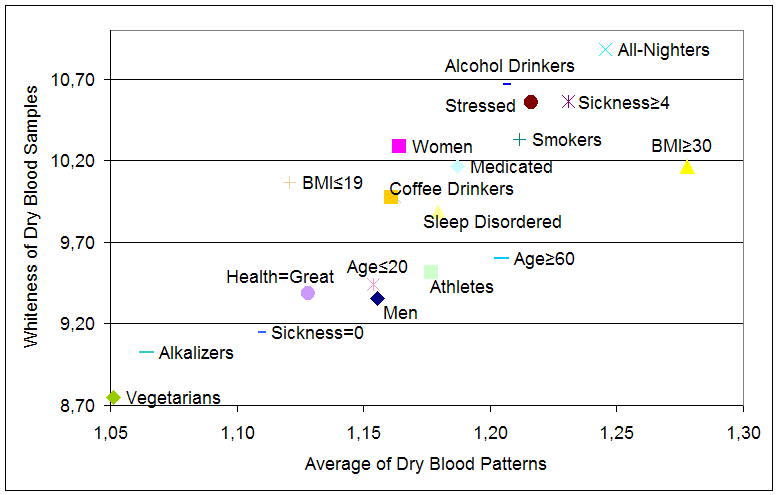
Blood purity (Vapa & Vapa 2012) is on average 82% in Finnish population measured from 657 persons. Blood purities below 70% and above 90% are rare. All blood purities below 50% have been measured from hospital patients.
The reliability of blood purity is high. The similarity of two consecutive samples is statistically significant. Pearson correlation is 0,813, p-value < 0,0001 and in average two sample difference is 4,5%. Therefore blood purity is reliable measure of health.
We have also monitored the long-term stability of blood purity with daily and monthly measurements. In the graph shown below the two top-most curves have been measured as one-month period and the other two curves below as measurements with about one-month intervals. The blood purity stays within 5% on daily measurements. Measurements taken each month have higher variety. Patient with aplastic anemia stayed constantly below population average and erythrocyte sedimentation rate was high all the time before death, 46 – 115 mm/h.
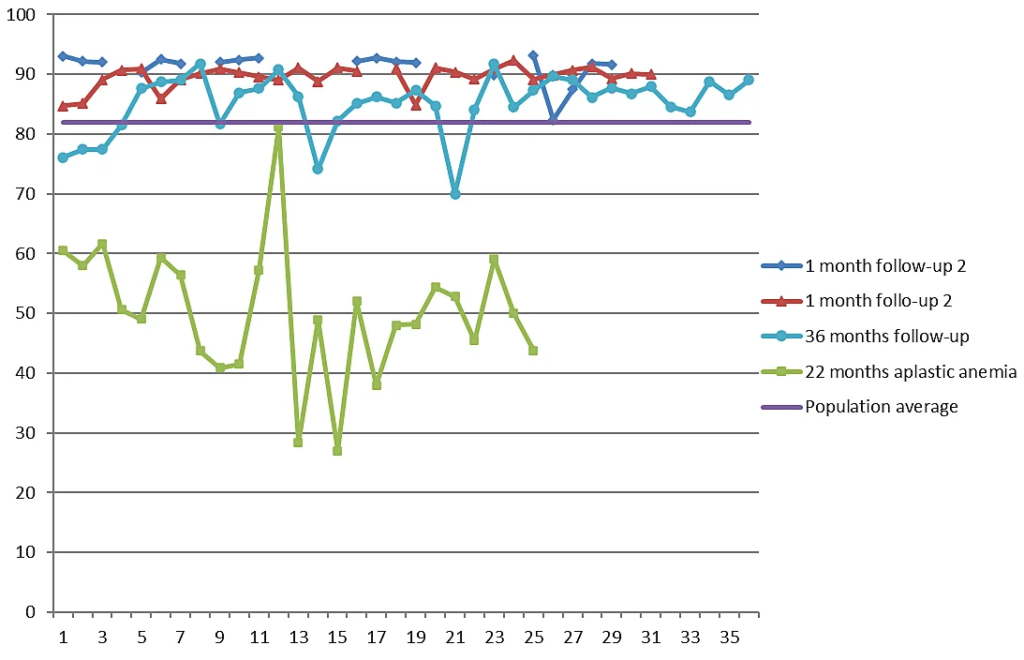
As a case example, the figure below shows the diagnosis and treatment process of breast cancer patient. In the beginning of May 2013 the breast cancer diagnosis was ready and before that the low level of blood purity was already seen. The cancer surgery was done at 15.5.2013 and the treatment with cytostatic drugs begun on 27.6.2013 lasting until 11.10.2013. The radiation therapy was given 6.11.2013 – 20.12.2013 almost every day. It can be seen from the graph that the low level of blood purity indicates impaired health.
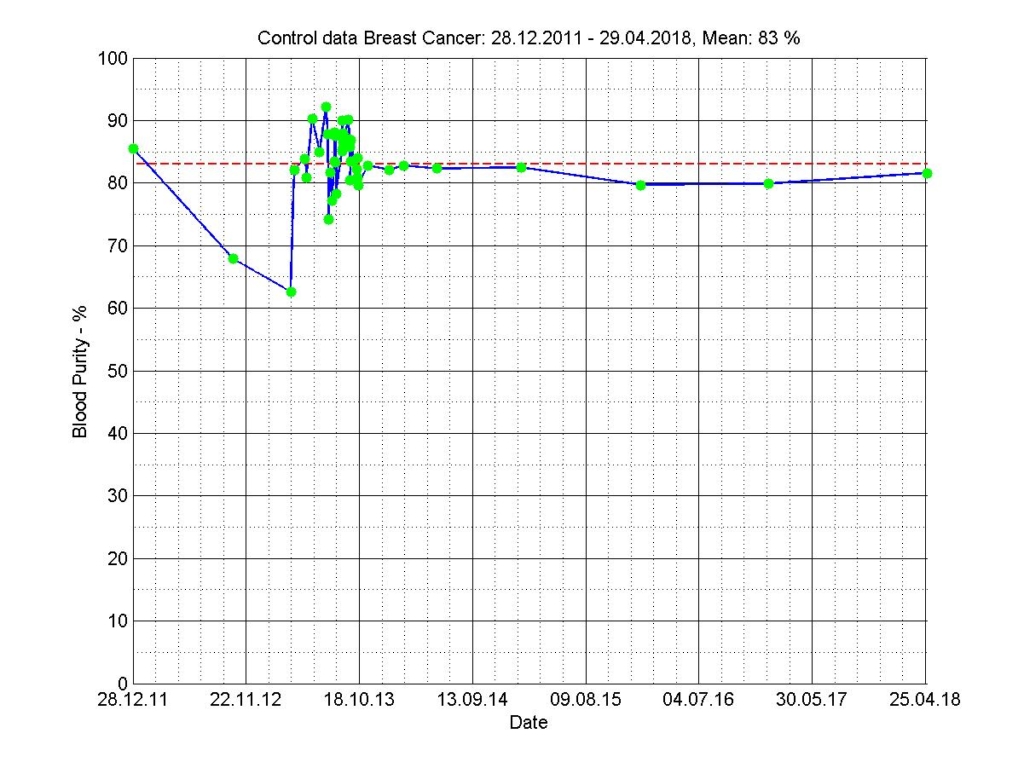
Master’s thesis work ”Kuivaveren valkoisuus ja kliiniset verimuuttujat” (The whiteness of dry blood and clinical blood variables) in University of Jyväskylä (Kimmo 2014) showed that the whiteness of dry blood correlates with erythrocyte sedimentation rate. Therefore the dry blood method is fast, cheap and easy method to measure inflammation. Model was also developed to estimate dry blood whiteness based on different clinical blood variables. The model is based on the amount of neutrophils, the amount of fibrinogen, the size variation of erythrocytes, the amount of immunoglobulin-A and the amount of hemoglobin. The master’s thesis work also summarizes the history of peer-reviewed dry blood research originating from 1930’s.
